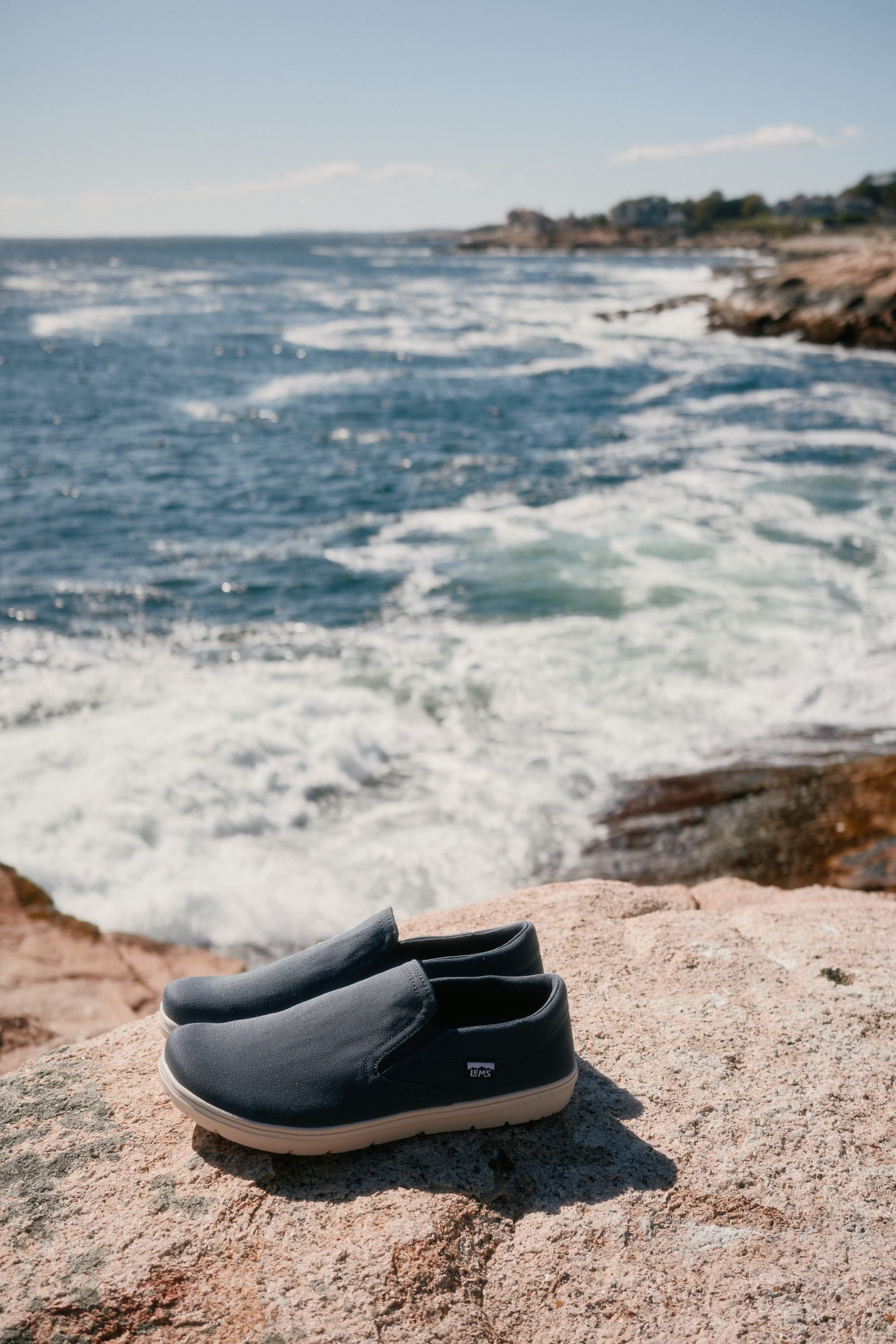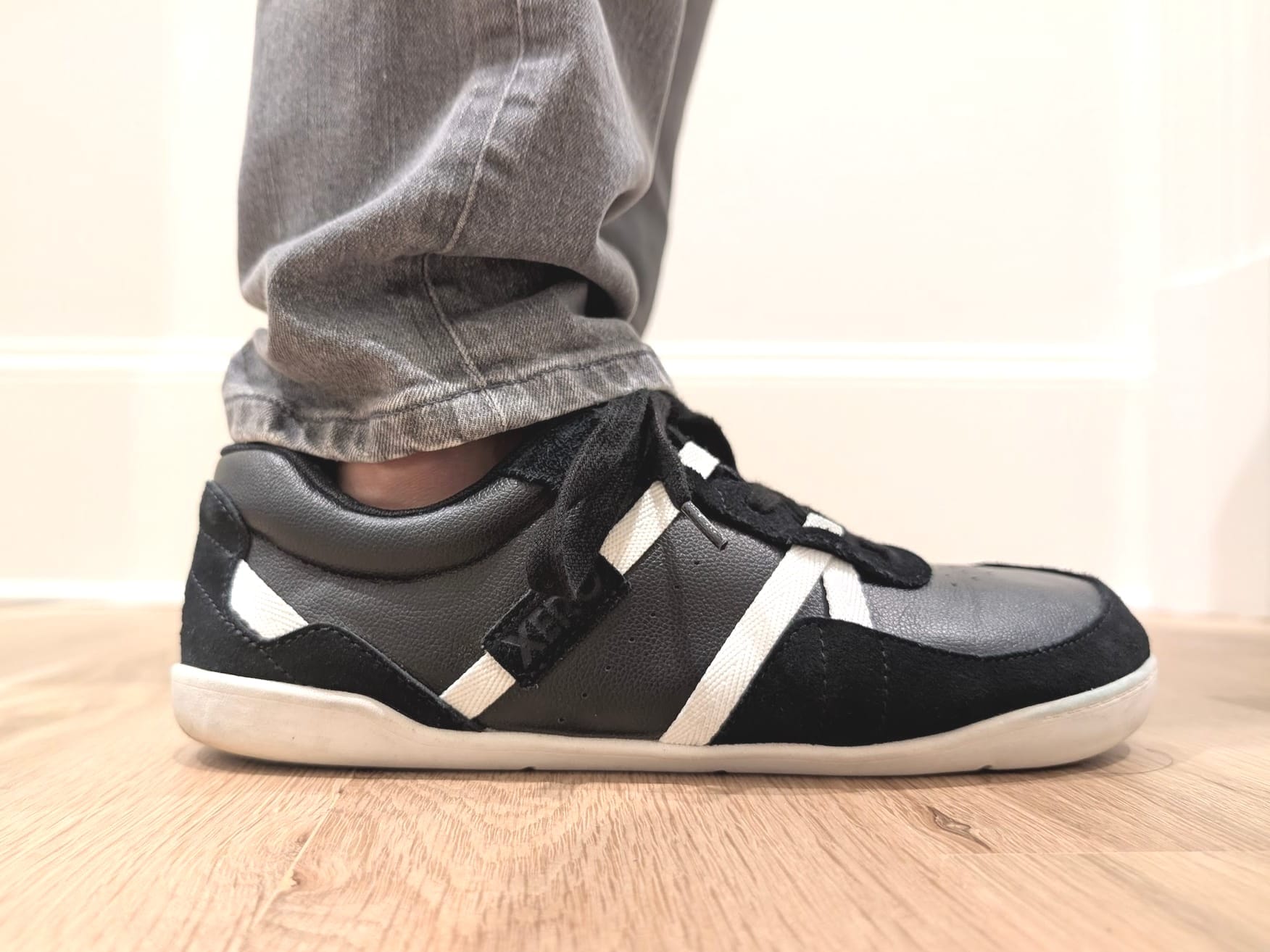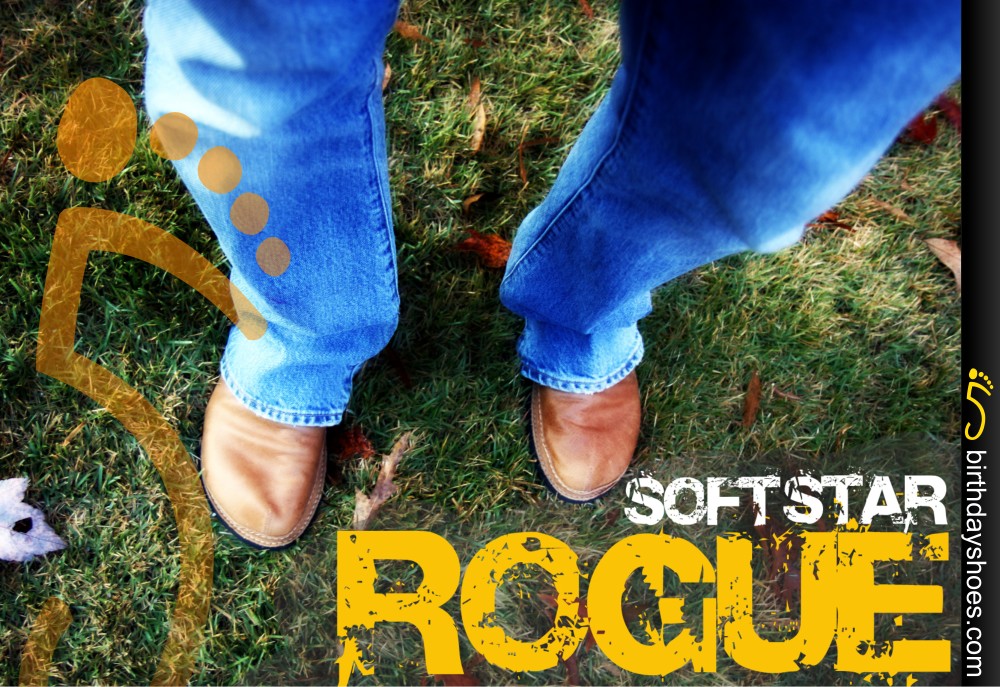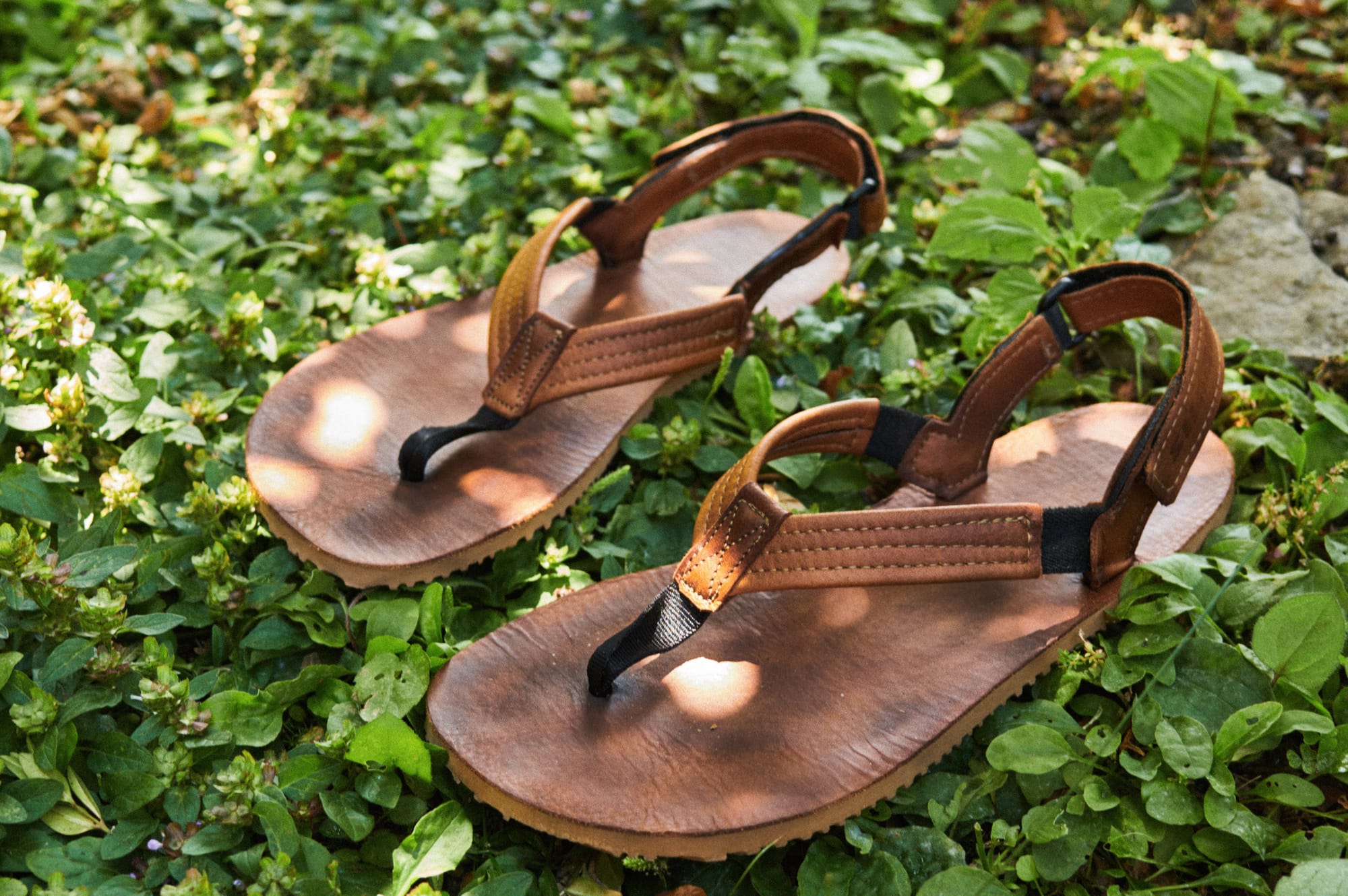Vivo Barefoot Gobi Boot Review
With the success of Vivo Barefoot's ultra-popular "Ra" comes the release of a Ra-like ankle high leather boot called the Gobi. Vivo shot me a pair of these Gobis to test out, and I'm happy to oblige ? these boots are comfortable, make my feet happy, an…
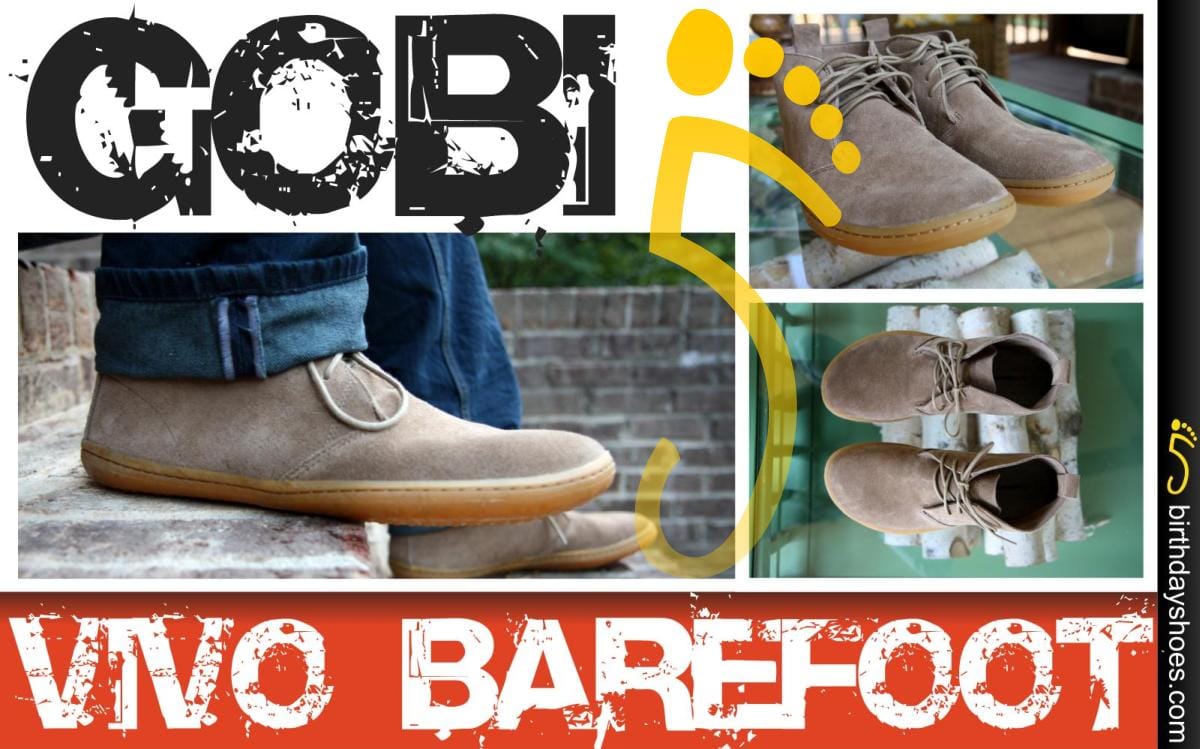
With the success of Vivo Barefoot's ultra-popular "Ra" comes the release of a Ra-like ankle high leather boot called the Gobi. Vivo shot me a pair of these Gobis to test out, and I'm happy to oblige ? these boots are comfortable, make my feet happy, and provide plenty of proprioceptive feedback. And they do it with a style that is simple yet fashionable and by extension, classic.
What follows is a full review of the Gobi! Read on!
The Boots
Let's start with the details per Vivo, a la the Gobi product page:
Upper: Thick suede, unlined for outstanding comfort and style
Insole: 5mm Poliyou (foam), with Dri-lex performance material layer for moisture-wicking
Outsole Thickness: 3mm. Thinnest VIVOBAREFOOT sole offering
Color/leather options: Suede in either tan or brown; Full grain leather in flat black.
RETAIL: $150
The Gobi boot is simple in it's design. It's a standard 3mm thick Vivo sole with a removable foam ("Poliyou" is a proprietary foam) insole. The upper is straight suede (in my pair) through and through. It's got waxed laces. That's it — what you see is what you get with the Gobi. How do these components function?
I'll dive in further but first take a walk around the Gobi "barefoot boots" via these photos:
Inside -- Upper and Sole
SOLES — The Gobi boot has a 3mm thick sole. The material Vivo uses for a lot of its soles is TPU, which has a slightly different feel to it than rubber (as with Vibram soles). It's a little harder and more rigid to me than rubber or (Typically EVA) foam. The Gobi's sole is similar looking to the Vivo Barefoot Aqua Lite (reviewed here) in both texture and thickness but the Aqua Lite is more flexible (not sure why — they're supposedly the same thickness). Note that the Gobi is more flexible than the Vivo Barefoot Oak, which has a 4.5mm outsole. This is despite the two soles looking very similar in tread and color.
Like the Oak and most Vivo Barefoots, the sole of the Gobi lacks any real shape — there's no real curve at the arch, for example. It has some toe spring at the end — not enough to be bothersome to my feet but I'm not a stickler on toe spring like some.
Though the Gobi is a "desert boot" by description, it's got no lugging and I don't get the sense you'd go hiking anywhere outside of the urban world in these shoes?not because they couldn't handle the terrain, but simply because they're optimally suited for less aggressive terrain. By way of comparison, Vivo does make a rugged Offroad boot (e.g. the Offroad Hi boots) that utilizes Vivo's trail sole, which is aggressively lugged (used even for their Hybrid Golf shoes, as reviewed by Philip).
INSOLES — the Gobi's are utilizing what is, to me anyway, a new version of Vivo's removable foam insole. It's noted as being about 5mm thick, again the same as the Oak. However, it's not the same insole as the Oak. To my feet the Gobi insole provides a (subjectively) slightly more plush ride than the Oaks.
As with almost every other pair of Vivos, you can take the insoles out, leaving a sewn-in-place footbed that will give you maximum ground feel. Walking around in the Gobi's sans insole in one foot, insole in place in another, I notice that the extra cushioning makes my steps feel less jarring but also mutes some ground feel. For example, walking over tiles I can notice grout lines in my insole-less Gobis but not when the insole is in place. It's only subtly different, really.
The jarring I mention is mostly due to the fact that your foot has more room to "float" within the Gobi boots when you take the insole out, so when you step, the sole touches the ground a couple milliseconds before your foot touches. This is a very nuanced experience and I'm curious if anyone else has noticed it. It's something that isn't going to happen in most all pairs of FiveFingers (though I feel like it happens with the discontinued Bormio Vibrams, worn sockless for me).
Given it's getting cooler out and the insole provides my feet a slightly more snug fit in the Gobis, I'm prone to leave it in. You can take it or leave — yay options!
THE UPPER — The Gobi upper is straight suede leather through and through, meaning in most places the suede exterior is the same suede that is exposed on the inside of the boots. There are a couple spots where Vivo reinforced the leather with a secondary suede liner of sorts (namely at the heel). In all spots save for the insole, your foot is touched by suede. It's a nice touch.
The tongue is stitched in a way that it's gusseted, which prevents the tongue from flailing around and should keep more water out of the boots (Short of saturating the suede. Mind these Gobis aren't water-resistant). The one drawback to the tongue is that it makes putting the Gobis on a little trickier as the maximum opening is limited.
Since I'm prone to shun socks if at all possible (call me lazy), the sweet, sweet thick suede upper of the Gobi feels wonderful on my bare feet and ankles. Because of the design, worn with insoles in place, you have very, very few exposed stitches touching your feet?remarkable in that nothing is there to irritate your feet. Of all the Vivo Barefoots I've reviewed, the Gobi barefoot boots feel the best against my bare feet. I don't have much critical feedback to give here other than to say that the only way to make them better would be to have a suede leather footbed, too. Short of that, the net build on the Gobi is pretty flawless.
Function and Good looks
LOOKS — The Vivo Barefoot Gobi is, to me anyway, a shoe meant for casual and/or business casual wear. It's subdued, simple aesthetic will be right at home worn with a pair of jeans or a pair of slacks. Over the last month I've lost my morning sun, making pre-work photos hard to take, and as a result, I've only got photos of the Gobis worn with jeans, but you should still get a sense for how these would pair with Khaki pants if you wanted to wear these to work via these photos:
All in all, the Gobi seemed to be versatile with my closet. It can be dressed up or down. If you wanted a slightly dressier Gobi, you'd probably go full grain black leather (no non-suede option in brown at this time).
I like the look of the Gobi. While it shares a similar aesthetic to the Vivo Ra (the Ra isn't a boot, runs at $130, and is only available in straight leather options), for some reason the Gobi doesn't look quite as fat in the forefoot as the Ra. Perhaps it's the way the tongue comes together. Alternatively, maybe it's how the Gobi doesn't taper in over the middle upper with the lower ankle cut of the Ra. I can't quite figure out what's driving the apparent difference in aesthetic.
I do wish the Gobi was available in more full grain leather options (a dark brown or red brown Gobi might look really good) like the Ra. As it is, I do like the suede and since shinier leather doesn't pair so well with jeans (it's less versatile to my fashion's eye), I'm happy with these light tan suede Gobis and will get more use out of them.
FUNCTION — The Gobi satisfies as being a barefoot boot by checking the box on various "barefoot shoes" qualities (See some basics of what a barefoot shoe is here):
- Gobi boots allow your foot to move dynamically. I can actually flex the soles down a bit in my Gobis and dorisflexing isn't a problem, though the upper does constrain some upward flex (It's not going to be as flexible as a pair of FiveFingers or the upcoming 2013 Vapor Gloves). Despite being an ankle-high boot, the Gobi upper is flexible enough that my feet don't feel like they're fighting the upper at the ankle.
- The Gobi doesn't offer any foot support. Typical Vivo Barefoot soles are flat and lack arch support. Gobi bareboots (a typo, but one I'm not fixing!) don't support your feet.
- You will feel the ground with the Gobi! Already touched on this, but these will provide solid ground feel, keeping you attuned to the surfaces over which you walk.
- Gobi's won't mess with your biomechanics. Being neutral from heel to toe and flexibly soled, I don't find the Gobis negatively impacting my walking gait. a trot feels natural in them, too, so anyone want to try running a 10K in them? If you do it let me know.
- Gobis are fairly lightweight given they're a boot. At a bit over 8 oz. per shoe, these boots really aren't that heavy at all. They certainly won't make you feel fatigued from a full day of wear.
This gets at an important point. Because the Gobi is a boot you're likely to wear day-in and day-out, all day long, the big question is: are they comfortable?
And the answer is yes. With soft suede uppers and a roomy last, my feet are happy to wear the Gobi all day long, and relative to other Vivo Barefoots, I think the Gobi is one of the most comfortable models I've tested, even moreso than my favorite the Vivo Oak. What more can I say than that?
Conclusion
I like the Gobi boots. Vivo did a solid job designing an ankle-high boot that leaves little to be desired by my feet. At a $150 pricetag, the Gobi isn't what I'd call cheap, but relative to other Vivos, I think it's at a pretty reasonable pricepoint. Where it gets interesting is that you can get the Gobi for almost 50% off at 6pm (NOTE: they have other Gobi colorways, too; just search vivobarefoot here).
Perhaps the best part about the Gobi to me is that when dressed up, given adequately long pants, I can still wear them without socks. Leather, laced shoes that cut off below the ankle bone look a little silly if worn without socks. The Gobi solves that problem and the only "cost" to my feet is a little extra effort putting them on and taking them off (Thankfully the laces are very easy to adjust even though the tongue doesn't flex out as readily as it would if it wasn't attached to the Gobi's sidewalls).
Whatever. I just sorta like the "cut" of the ankle-high suede. These are good-looking suede boots. That's what I think, anyway, am I wrong?
And as always, let me know if I missed anything, or if you have the Gobis already (or the Ras!) and want to add in your two cents. Let's hear it!

